B. R. Manoj
BiLSTM and Attention-Based Modulation Classification of Realistic Wireless Signals
Aug 14, 2024Abstract:This work proposes a novel and efficient quadstream BiLSTM-Attention network, abbreviated as QSLA network, for robust automatic modulation classification (AMC) of wireless signals. The proposed model exploits multiple representations of the wireless signal as inputs to the network and the feature extraction process combines convolutional and BiLSTM layers for processing the spatial and temporal features of the signal, respectively. An attention layer is used after the BiLSTM layer to emphasize the important temporal features. The experimental results on the recent and realistic RML22 dataset demonstrate the superior performance of the proposed model with an accuracy up to around 99%. The model is compared with other benchmark models in the literature in terms of classification accuracy, computational complexity, memory usage, and training time to show the effectiveness of our proposed approach.
On the Performance of IRS-Assisted SSK and RPM over Rician Fading Channels
Apr 10, 2024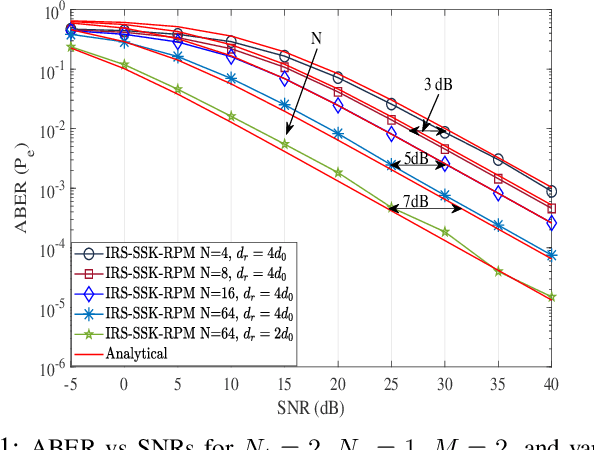
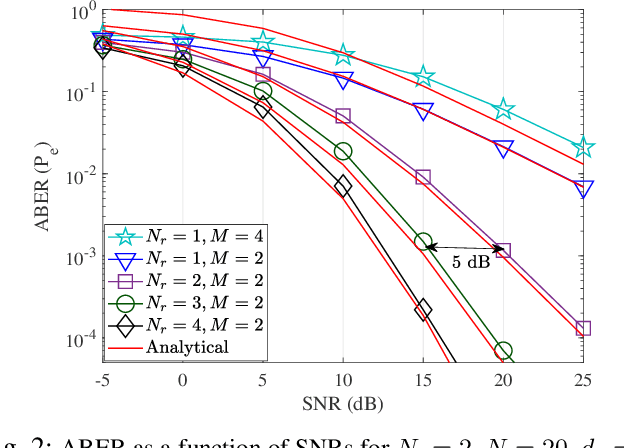
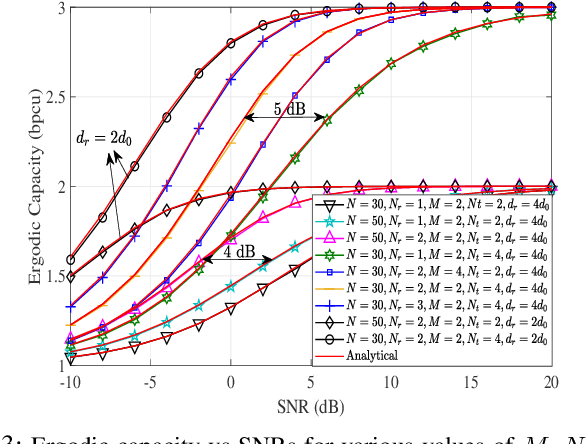
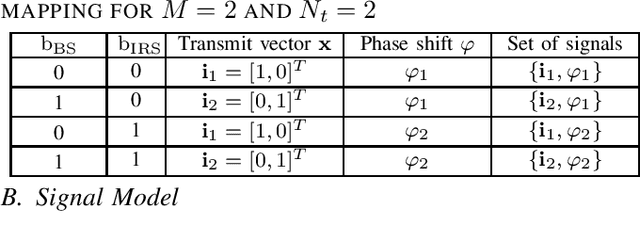
Abstract:This paper presents the index modulation, that is, the space-shift keying (SSK) and reflection phase modulation (RPM) schemes for intelligent reflecting surface (IRS)-assisted wireless network. IRS simultaneously reflects the incoming information signal from the base station and explicitly encodes the local information bits in the reflection phase shift of IRS elements. The phase shift of the IRS elements is employed according to local data from the RPM constellation. A joint detection using a maximum-likelihood (ML) decoder is performed for the SSK and RPM symbols over a realistic fading scenario modeled as the Rician fading channel. The pairwise error probability over Rician fading channels is derived and utilized to determine the average bit error rate. In addition, the ergodic capacity of the presented system is derived. The derived analytical results are verified and are in exact agreement with Monte-Carlo simulations.
Downlink Power Allocation in Massive MIMO via Deep Learning: Adversarial Attacks and Training
Jun 14, 2022
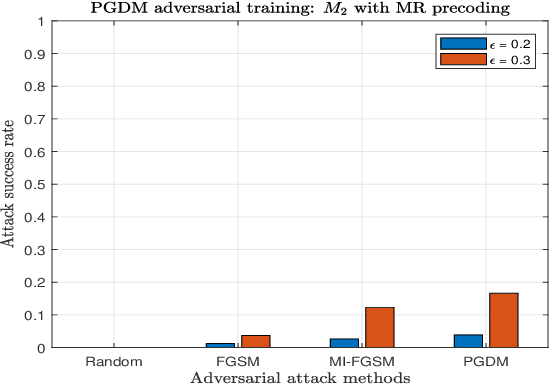
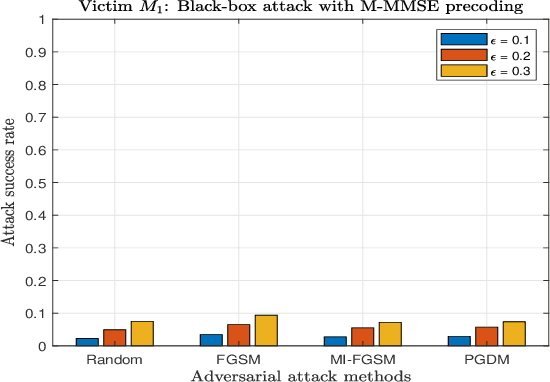
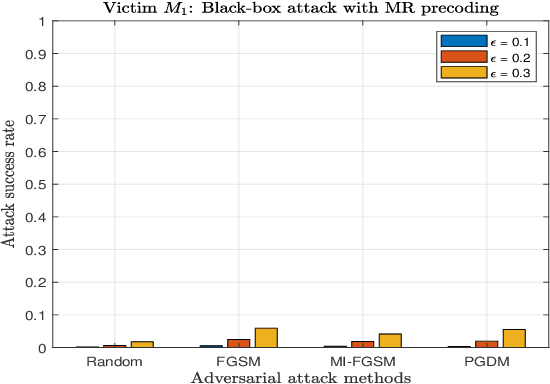
Abstract:The successful emergence of deep learning (DL) in wireless system applications has raised concerns about new security-related challenges. One such security challenge is adversarial attacks. Although there has been much work demonstrating the susceptibility of DL-based classification tasks to adversarial attacks, regression-based problems in the context of a wireless system have not been studied so far from an attack perspective. The aim of this paper is twofold: (i) we consider a regression problem in a wireless setting and show that adversarial attacks can break the DL-based approach and (ii) we analyze the effectiveness of adversarial training as a defensive technique in adversarial settings and show that the robustness of DL-based wireless system against attacks improves significantly. Specifically, the wireless application considered in this paper is the DL-based power allocation in the downlink of a multicell massive multi-input-multi-output system, where the goal of the attack is to yield an infeasible solution by the DL model. We extend the gradient-based adversarial attacks: fast gradient sign method (FGSM), momentum iterative FGSM, and projected gradient descent method to analyze the susceptibility of the considered wireless application with and without adversarial training. We analyze the deep neural network (DNN) models performance against these attacks, where the adversarial perturbations are crafted using both the white-box and black-box attacks.
Universal Adversarial Attacks on Neural Networks for Power Allocation in a Massive MIMO System
Oct 10, 2021
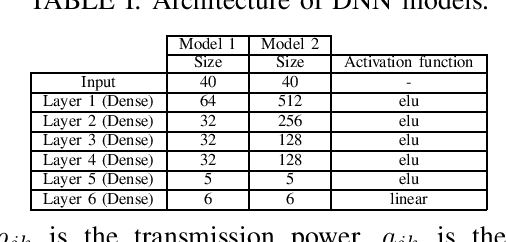
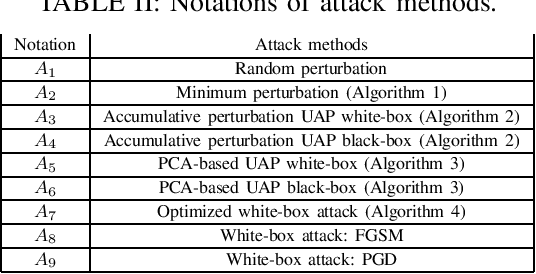
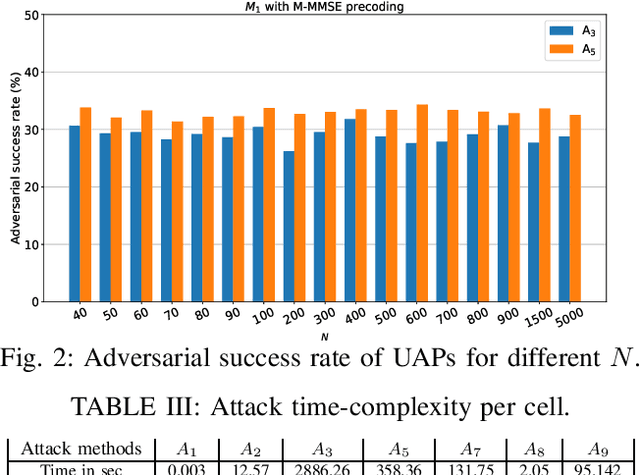
Abstract:Deep learning (DL) architectures have been successfully used in many applications including wireless systems. However, they have been shown to be susceptible to adversarial attacks. We analyze DL-based models for a regression problem in the context of downlink power allocation in massive multiple-input-multiple-output systems and propose universal adversarial perturbation (UAP)-crafting methods as white-box and black-box attacks. We benchmark the UAP performance of white-box and black-box attacks for the considered application and show that the adversarial success rate can achieve up to 60% and 40%, respectively. The proposed UAP-based attacks make a more practical and realistic approach as compared to classical white-box attacks.
Sensing and Classification Using Massive MIMO: A Tensor Decomposition-Based Approach
Sep 02, 2021
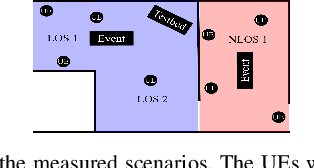
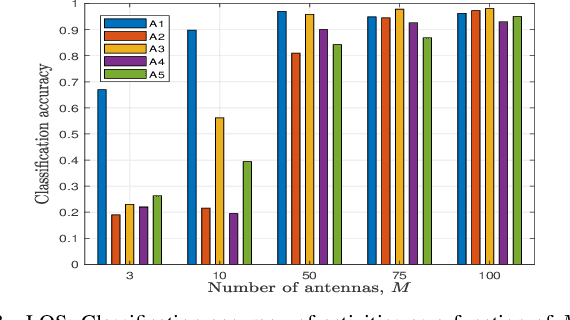
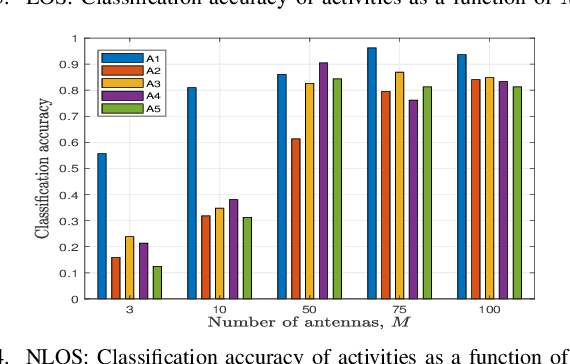
Abstract:Wireless-based activity sensing has gained significant attention due to its wide range of applications. We investigate radio-based multi-class classification of human activities using massive multiple-input multiple-output (MIMO) channel measurements in line-of-sight and non line-of-sight scenarios. We propose a tensor decomposition-based algorithm to extract features by exploiting the complex correlation characteristics across time, frequency, and space from channel tensors formed from the measurements, followed by a neural network that learns the relationship between the input features and output target labels. Through evaluations of real measurement data, it is demonstrated that the classification accuracy using a massive MIMO array achieves significantly better results compared to the state-of-the-art even for a smaller experimental data set.
Moving Object Classification with a Sub-6 GHz Massive MIMO Array using Real Data
Feb 09, 2021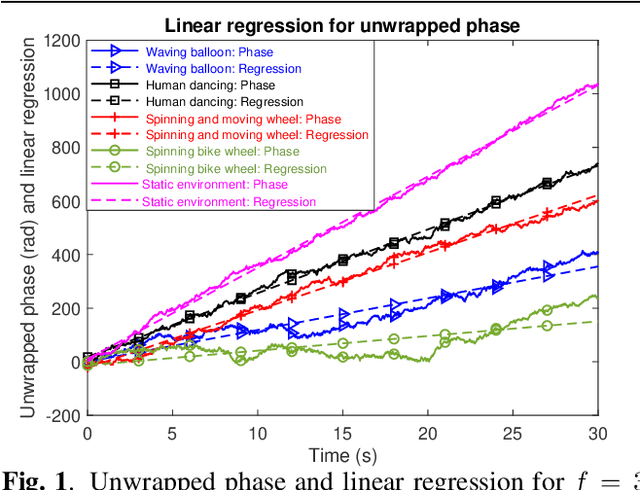
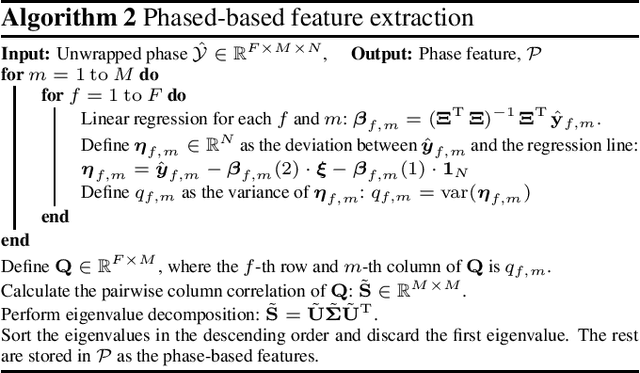
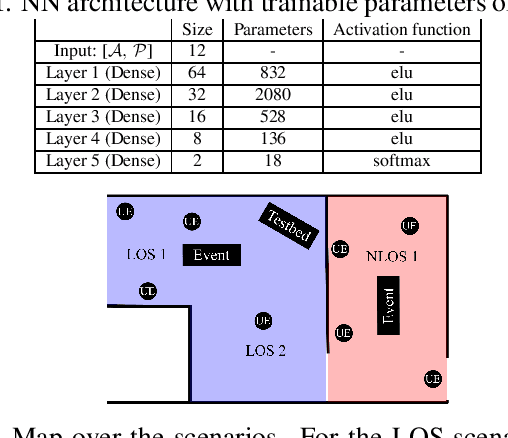
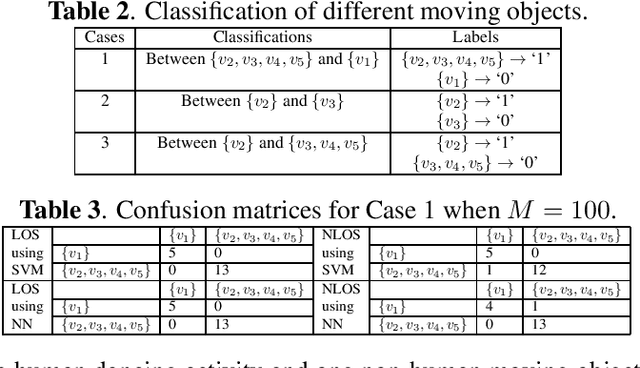
Abstract:Classification between different activities in an indoor environment using wireless signals is an emerging technology for various applications, including intrusion detection, patient care, and smart home. Researchers have shown different methods to classify activities and their potential benefits by utilizing WiFi signals. In this paper, we analyze classification of moving objects by employing machine learning on real data from a massive multi-input-multi-output (MIMO) system in an indoor environment. We conduct measurements for different activities in both line-of-sight and non line-of-sight scenarios with a massive MIMO testbed operating at 3.7 GHz. We propose algorithms to exploit amplitude and phase-based features classification task. For the considered setup, we benchmark the classification performance and show that we can achieve up to 98% accuracy using real massive MIMO data, even with a small number of experiments. Furthermore, we demonstrate the gain in performance results with a massive MIMO system as compared with that of a limited number of antennas such as in WiFi devices.
Adversarial Attacks on Deep Learning Based Power Allocation in a Massive MIMO Network
Jan 28, 2021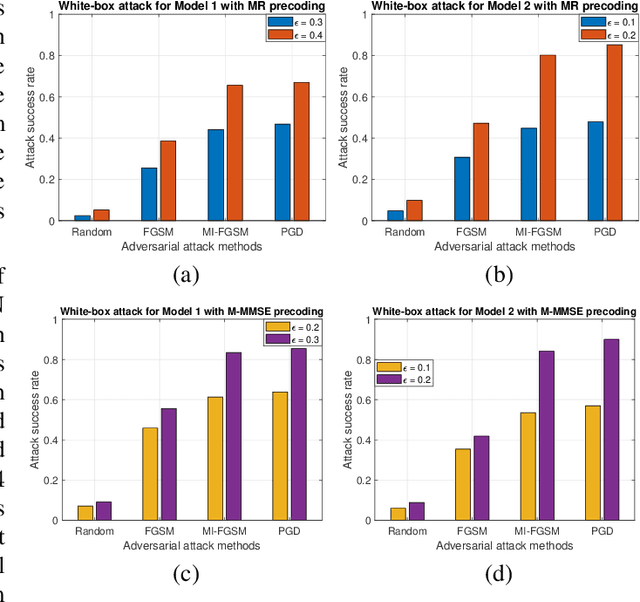
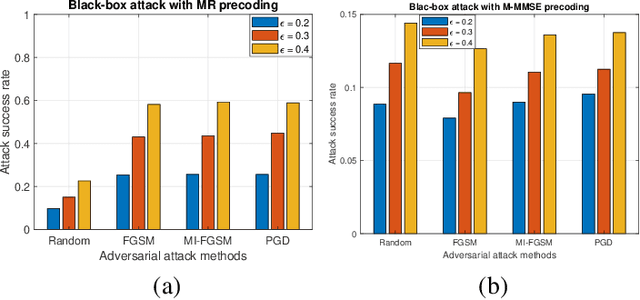
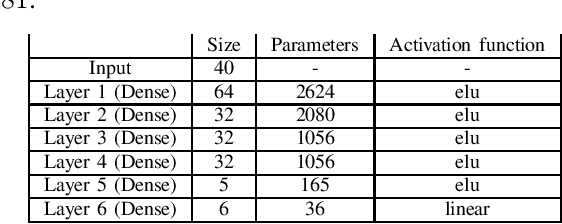
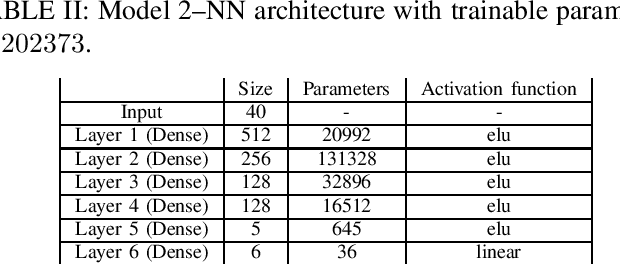
Abstract:Deep learning (DL) is becoming popular as a new tool for many applications in wireless communication systems. However, for many classification tasks (e.g., modulation classification) it has been shown that DL-based wireless systems are susceptible to adversarial examples; adversarial examples are well-crafted malicious inputs to the neural network (NN) with the objective to cause erroneous outputs. In this paper, we extend this to regression problems and show that adversarial attacks can break DL-based power allocation in the downlink of a massive multiple-input-multiple-output (maMIMO) network. Specifically, we extend the fast gradient sign method (FGSM), momentum iterative FGSM, and projected gradient descent adversarial attacks in the context of power allocation in a maMIMO system. We benchmark the performance of these attacks and show that with a small perturbation in the input of the NN, the white-box attacks can result in infeasible solutions up to 86%. Furthermore, we investigate the performance of black-box attacks. All the evaluations conducted in this work are based on an open dataset and NN models, which are publicly available.
 Add to Chrome
Add to Chrome Add to Firefox
Add to Firefox Add to Edge
Add to Edge